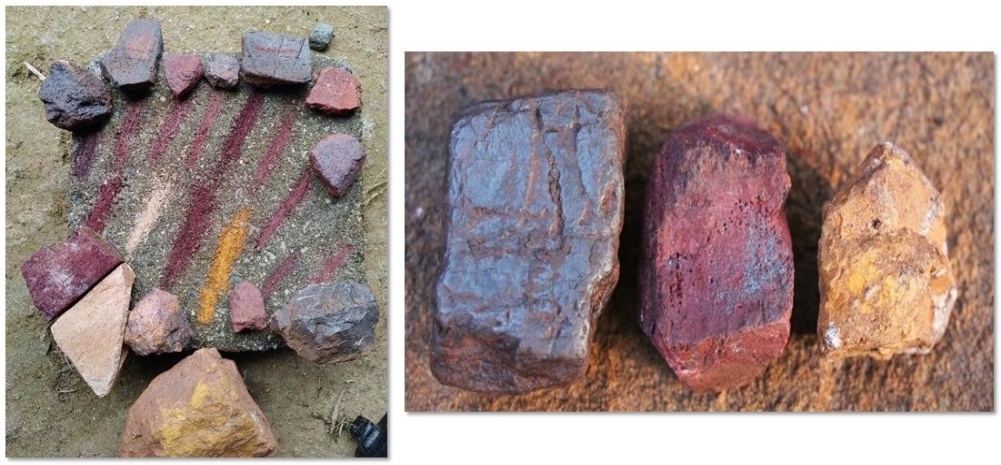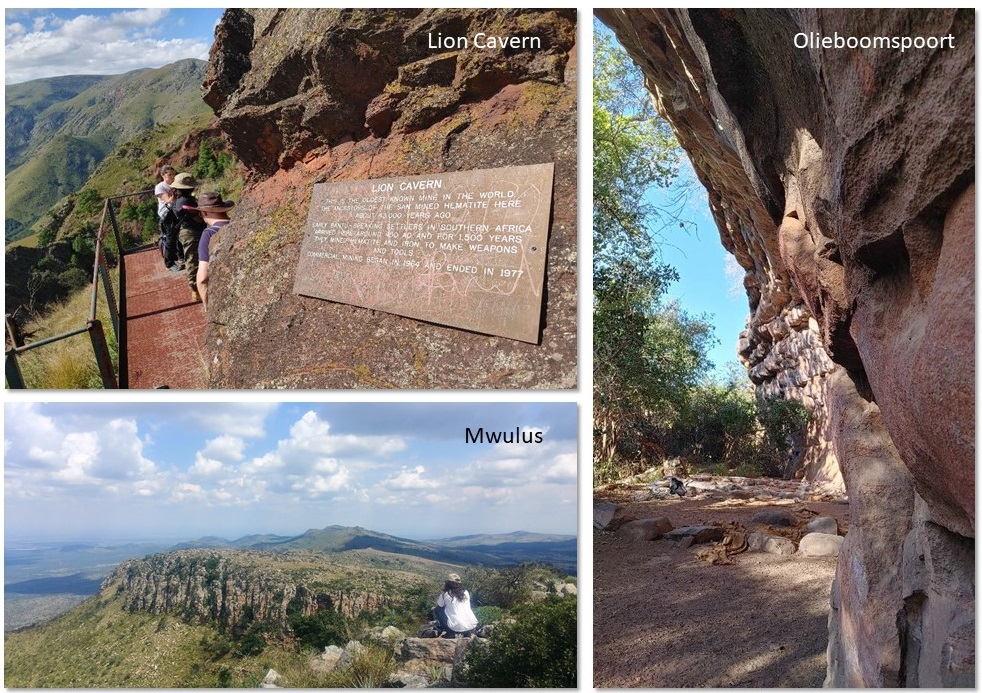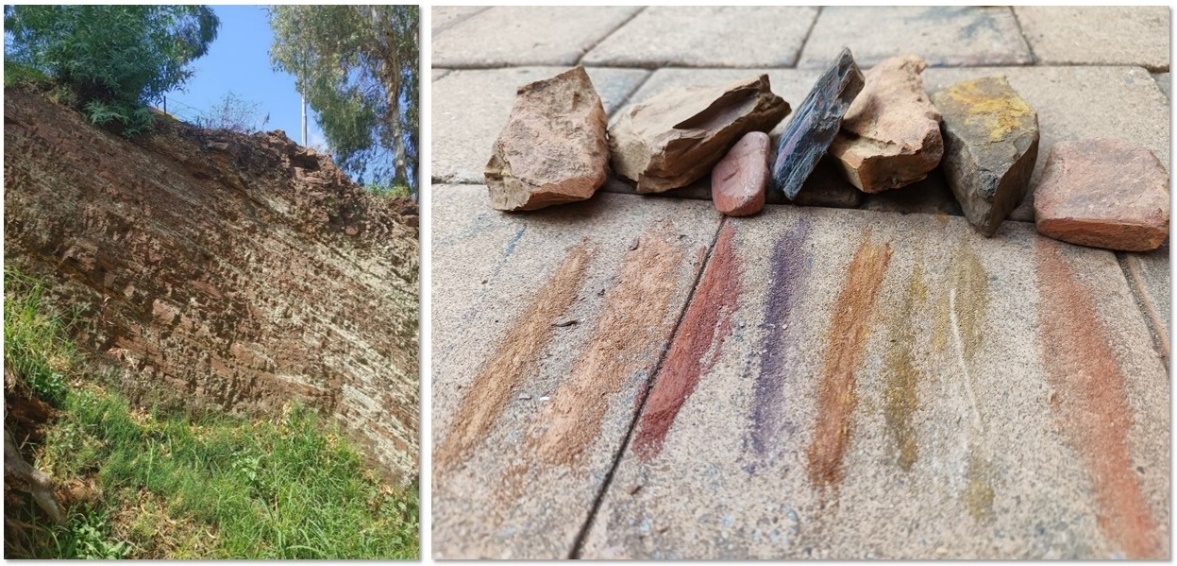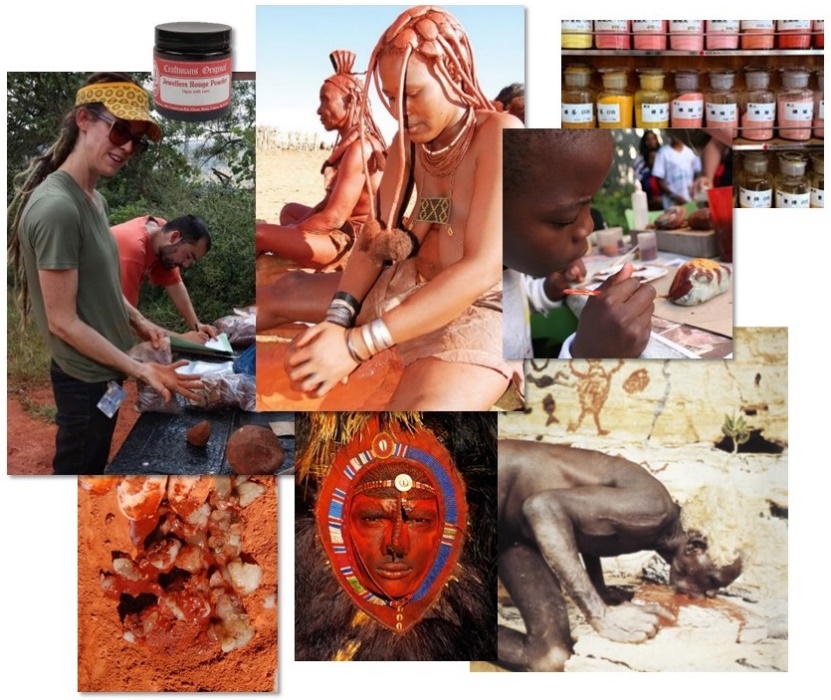A COLOURFUL PATH: OUR HUMAN JOURNEY ALONGSIDE OCHRE
By:
Dr Tammy Hodgkiss Reynard
Date:
Thu, 06/07/2023 - 19:30
Venue:
The Auditorium, Roedean School, 35 Princess of Wales Terrace, Parktown, Johannesburg
Branch:
Northern
A COLOURFUL PATH: OUR HUMAN JOURNEY ALONGSIDE OCHRE
Dr Tammy Hodgskiss Reynard
Date: Thursday, 06 July 2023 Time: 19:30
Venue: The Auditorium, Roedean School,
35 Princess of Wales Terrace, Parktown, Johannesburg
Charge: Non-members: R50, members: free
Ochre and mineral pigments have been used for well over 100 000 years by Homo sapiens. The regular use of ochre coincides with archaeological evidence of important cognitive and behavioural advances in our species, and ochre use has often been seen as evidence for the emergence of the modern human mind. Ancient ochres were processed in many ways, and some of the first art ever made by humans was made by engraving designs onto the surfaces of ochre, with the earliest evidence coming from South Africa. These iron-rich, brightly coloured rocks and pigments are still widely used around the world today. They have many uses, from sunscreen and medicines to beautiful paints, and there is evidence that they were used in various ways in the past too. This talk will take you on an exploration of 100 000 years of ochre collection, applications and research.
Dr Tammy Hodgskiss Reynard
Tammy Hodgskiss (married surname Reynard) is the curator at the Origins Centre Museum, University of the Witwatersrand, South Africa. She was born and bred in Johannesburg. Tammy is an archaeologist who researches how humans used ochre in the ancient past – from the very beginnings of our human journey. Tammy is driven by a passion to learn about people, our pasts, and our cultural knowledge systems – through cross-disciplinary research, collaboration, and honest conversations. As curator she manages exhibitions, lectures, and public programs, and runs interactive ochre workshops involving ochre paint creation and archaeology-inspired painting.
Report back added : 28 September 2023
But what is ochre? It is a term used archaeologically to describe a wide range of rocks that produce a colourful streak and were processed to create colourful, iron-rich powders. This category therefore includes shales, hematite, sandstones, and even sometimes chalks and consolidated clays. Most pieces range in colour from yellows to reds, but purple and white varieties are also included under the ‘ochre’ umbrella.
Report back added : 28 September 2023
But what is ochre? It is a term used archaeologically to describe a wide range of rocks that produce a colourful streak and were processed to create colourful, iron-rich powders. This category therefore includes shales, hematite, sandstones, and even sometimes chalks and consolidated clays. Most pieces range in colour from yellows to reds, but purple and white varieties are also included under the ‘ochre’ umbrella.

Some of the geological types and colours included in archaeological ‘ochre’ assemblages.
Ochre and mineral pigments have been used for well over 100 000 years by Homo sapiens, with the earliest evidence of ochre collection and use appearing around 500 000 years ago. Ochre research in South Africa has been focused on the MSA, as it was at this time that ochre use became common. But, as discussed after the talk, this view is probably biased by lack of (or less) research in other regions of Africa, as well as by a focus on use of ochre in the Middle Stone Age as opposed to more recent time periods. Similarly, much research has focused on coastal sites such as Blombos, Klasies, Diepkloof and Sibudu, giving a possibly skewed view of the spread of Homo sapiens around the landscape at the time. Recent MSA research in southern Africa – at sites such as Lion Cavern in Eswatini and Mwulus, Olieboomspoort and Red Balloon in Limpopo, South Africa – has shown that humans were living in varied environments and regions around the subcontinent and using (and/or collecting and mining) large amounts of ochre at these sites.
Tammy discussed some ongoing ochre studies in southern Africa that are looking into sourcing or finding the provenance of ochre to better understand the movement of people and ideas around the landscape. Questions about social identity and communication in the past also come into play when researchers look at the role of ochre. For example, were blood red varieties or shiny pigments perhaps chosen for use as social identifiers?


Archaeological research into ochre sources and use at inland sites in southern Africa have been renewed by various local and international researchers in recent years.
The habitual use of ochre in the MSA also coincides with archaeological evidence of important cognitive and behavioral advances in our species. Ochre use has often been seen as evidence for the emergence of the ‘modern’ human mind. The evidence includes complex stone and bone tool technologies, advanced understanding of a variety of materials, and the storing of information outside the brain – for example, in the form of engraved designs as signs of symbolic thought. Archaeological research has looked into identifying how ochre was ground or crushed into powder, as well as examining other objects used with ochre, such as grindstones, stone flakes and shell beads.
Knowing the best methods to process ochre, and why and how it can be used, is invaluable for interpreting ochre assemblages and use-traces found on archaeological pieces. Experimental or replicative ochre studies have also added to this knowledge and understanding past ochre use, showing that ochre has a diverse range of applications apart from uses in art, symbolism and ritual. These include its use as sunscreen, as an aggregate in hafting glues, hide-tanning, insect repellant, and as a polishing abrasive.


A range of colours of ochre – shale – collected from the Parktown Shale Formation at Wits University, Johannesburg.
Ochre is still widely used around the world today for medicinal, ritual, and artistic purposes. Research into ethnographic uses has helped inform archaeological interpretations. This is a versatile and beautiful resource that is all around us, and which has been used by Homo sapiens from our very beginning.


The many uses of ochre today and in the recent past, have helped inform our understanding of the past uses of the mineral.
To read more on this topic, you can have a look at Tammy’s article in The Digging Stick, December 2021, ‘Our past in colour: Exploring the early use of ochre in southern Africa’, or contact her at tammy.hodgskiss@wits.ac.za
Report and photos by Tammy Hodgkiss